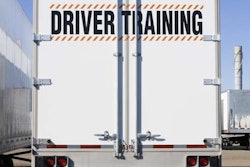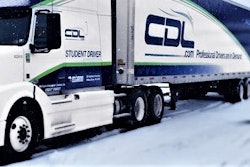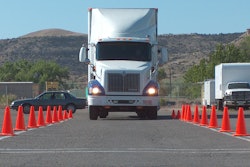In ’93 when I started out, the industry had already made the change to the current CDL, though many rumors were flying around about it being changed to a federal license instead of a state license. Like most regulatory/legal topics, it was hotly debated among drivers. In fact, in researching this I consulted a friend I’ve debated the topic with in the past. As soon as I mentioned a federal license, he spoke up against it. Still, it remains something that could be the approach to take if lawmakers are seriously considering bringing 18-year-olds into over-the-road operations. As I’ve said before, I have no issues with that if done right, such as with an apprentice-type program.
When I was a Marine I carried a military ID and license for the equipment I operated and was trained on. Yet, I still used and possessed my driver’s license from Missouri. I never gave up the privilege to hold, carry and use that license. Yes, there are those of us who remember that holding a driver’s license is a privilege, not a right. It’s something states offer us as long as we use it responsibly — it had no bearing upon my military license. So, in the interest of winding out a suggestion for lawmakers and regulators, rather than just throwing stones, I feel it is high time the Commercial Driver’s License (which is supposed to be a professional license) became a graduated federal license, with all the benefits of federal employees offered.

We already have the basic divisions, it would just be a matter of tweaking to make it work. I suggest federal benefits, because while we do a job that pays the bills for our families we serve the country. Before you go running around screaming, think about it. Federal benefits have always been cheaper and better than those in the private sector — especially retirement pensions. If we had a federal license and the ability to contribute to and access the federal pension system, our retirement plans could easily follow from one company to another. Sure, we can set up a 401K today that might follow to a point, or use many other options offered.
But like having union benefits, under a new plan we could pay into one pension fund that would follow us from one to another. Such benefits have only been available to federal employees, of course, but perhaps it is time to start thinking out of the box, to build the industry and replenish our ranks.
In the current system as it works (or doesn’t) for most drivers, we may have 10 years at this company and 5 at another. It all counts as experience, but except in increasingly rare cases it by and large does not count toward a pension unless a driver has long tenure at one company that offers a pension package.
A modest proposal to consider.
As for what a graduated-type license might look like, Here’s a rough cut:
Apprenticeship level
A four-year stepping stone CDL-1a.
First year (training year): At least six months with a trainer — van, reefer, and hoppers only.
Those without the Class B license would be restricted as they are now as far as weight classification, however can only level up to a CDL-4d (see below) after the four-year mark and a minimum of 200,000 miles.
CDL-2b
Year two: A solo OTR driver will average anywhere from 100,000 to 150,000 miles if the company offers two weeks’ paid vacation and they use it. At this stage, they can add tanker and flatbed if they wish.
CDL-3c
Year three: Hazmat can now be added to experience level.
CDL-4d
Year four: At each level, it seems right that a pay bump would be the rule, and, if offered, an increase in vacation time. End dumps over 40,000 lbs. can be added.
By the end of four years a full-time OTR driver probably has in the neighborhood of 500,000-plus miles in the rear-view. With bonuses offered for accident-free miles, if we’re talking perfect-world scenarios a wage somewhere between $70K and $90K ought to apply at the end of the apprenticeship stage.
At this point, the entrepreneurs might begin to separate themselves from the pack as they consider truck ownership, now having had four years to learn the industry, learn their freight niche, and possibly take some business courses. This should also help tamp down the prevalence and success of predatory lease programs not uncommon today.
Journeyman level: CDL-JE
At this level, the driver is all in, and therefore should be awarded for their commitment just like in any other profession (we’re talking money and benefits here). It is only at this point that they can become a trainer if they so desire (with training as a trainer), giving their license a classification of CDL-JET, and more money.
At the ten-year mark you pick up:
Master-Journeyman level: CDL-MJ
Drivers can be trainers if so desired without classification (not without training education), because they have reached the Master level.
This is just a simple breakdown of how a graduated license might look – making it federal might also make it easier for the FMCSA to tie our physical requirements into the license without making us jump through hoops to get it done.










